Gujarat Tour Diary: Day 15| Dholavira to Modhera Sun Temple
If you have come to this page while searching for any comparison or difference between Konark and Modhera Sun Temples, then you may skip all the details about Gujarat, and directly go to the end of this page, where in I have talked about both these temples. And if you are interested about our Gujarat tour, I suggest you start from Day 0 of this travelogue.
Before I take you to Dholavira, I must share our early morning experience. As we were very much inside Great Rann of Kutch (GRK) White Desert, we asked Jamal to take us to GRK in the early morning, so that we can take some sunrise pictures. So, all three of us left our room, around 6.30 am. It was quite cold in the early morning and we were equipped with proper clothing. Jamal took us near to the White Desert, which was around 2 kms away from the lodge.
Unfortunately, he guided us to the western side of the Khadir Bet. He should have taken us to the eastern side for sunrise photos and western side for sunset photos. We parked our car near to the border of the Island & GRK. Once we realized his mistake, we walked for almost 750 mts into the White Desert, so that we get some better photos.
It was only three of us all along the way as well as in the whole of White Desert. We could see white salt on all the 360 degrees. We were patiently waiting for the Sun to rise, so that we can shoot him through our arsenals. As there was enough time, Jamal was explaining us about GRK and White Desert. Highlights of our talk:
- Every year there will be a Marathon called Run the Rann, and this year it will be held on 13th to 16th Feb 2015.
- For more details log on to http://www.runtherann.com/
- There are chances that even Rann Utsav will be shifted to Dholavira from next year on wards.
- Most part of GRK is a white salty desert. During rainy season if it rains, then this salt gets melted in the rain water. Then it will become a white lake.
- When this happens, lakhs and lakhs of Flamingos come here. It will be a feast for eyes to see those beautiful sights.
- If anybody is interested in bird photography, then they can enquire about this and come here during Oct-Nov etc.
- During summer, the water gets evaporated and the salt remains here itself.
- The small mountain that we are seeing on the western side is the Black Hill, which houses Dattatreya Temple.
- A road from the Black Hill to Dholavira is under construction. Once it is completed, the tourism at Dholavira also increases, as the journey time decreases drastically.
- This whole area is taken care by BSF.
- We can see Neelgai, Fox and other animals in this GRK.
- There are some quicksand spots in the GRK. Only we are aware of it. New comers should not venture out into White Desert without the guides.
- There are instances where in motor bikes have fallen into quicksand.
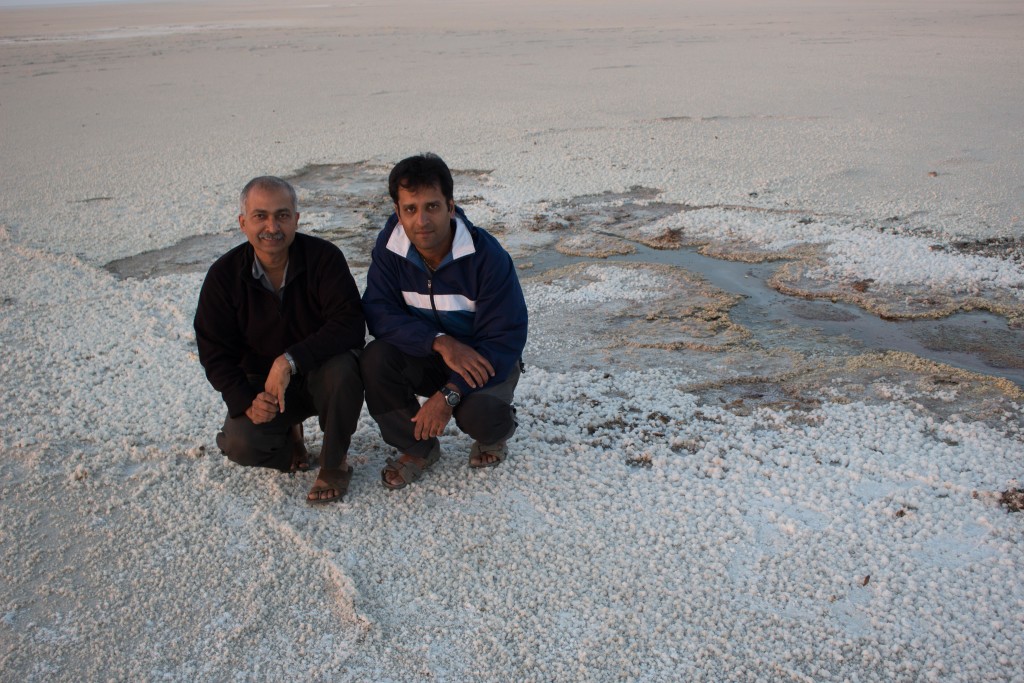
While we were discussing all these points, the Sun was rising. We took lots of photos and videos as well.
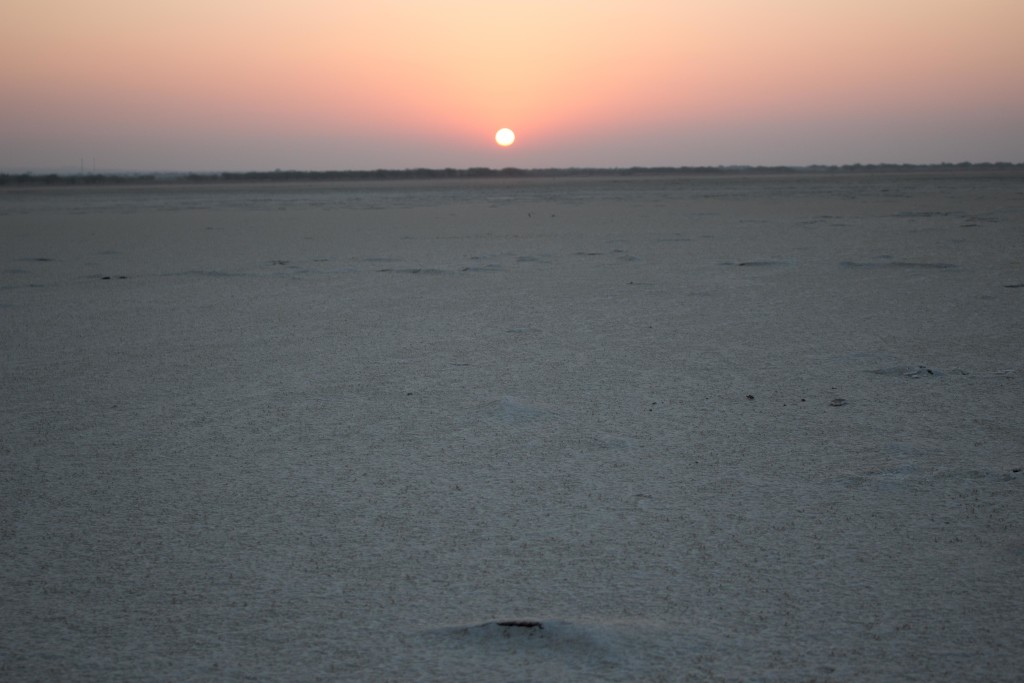
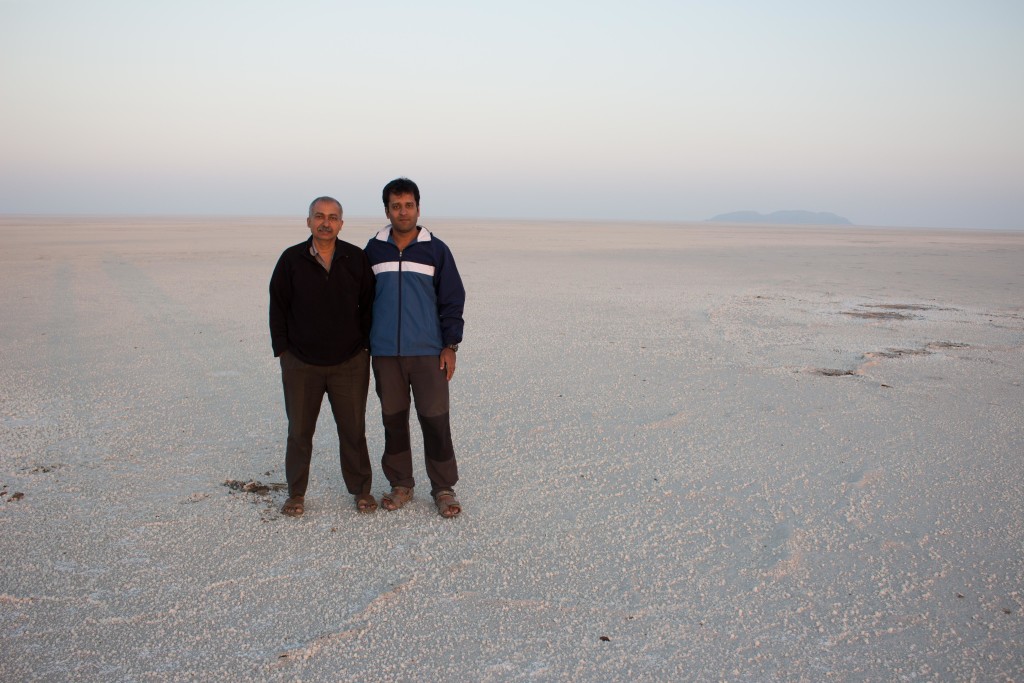
You may also view the video of the place around Sunrise time.
It was time for us to get back to the room for breakfast. So we started returning towards our parked car. Now we noticed something strange.
While we were returning, we saw some animal at the far end. Soon we realized that it was coming towards us. Then we realized that it was not an animal, but it was a human being, asking for our help.
So we stopped there. We soon realized that he was shouting something. As he was coming closer towards us, we realized that he is having a gun in his hand. He came near to us. Only then, we observed his uniform. He unlocked his gun and took position. He was too tired because of running, but he was shouting towards us – ‘who are you, from where are you coming, what are you doing here, why you have not stopped even though I am shouting from a long time?’
Now we were slowly coming to the ground reality. He was a BSF Jawan guarding the area for any Pakistani intruders. Yesterday we drove 635 kms, and we never realised that today also we were quite close to the Indo Pak border. So he was doing his duty. He thought that we were some intruders.
We told about our trip so far and also showed him our car which was parked close by. Then he turned towards Jamal, the local guide, and shouted ‘why you have not taken permission to bring these people here?’
In fact even Jamal was not aware of this permit. All of us apologized. By this time, a senior BSF person also came towards us. They asked us to lift our shirts and show the front portion (to see whether we are hiding anything). They also physically checked all of us and our camera bag etc. After checking our ID cards, they were satisfied that we are just tourists, and let us go.
Hence through this travelogue, I am informing you to take the necessary permits even to go out for photography in to the White Desert. I also assure you that the BSF is doing their duty vigilantly.
We came back to the room and had our breakfast. It was Dahi Parotha with pickle, which was tasty and filling. The total amount for lodging, dinner, breakfast, tax, tips etc put together was only Rs 1000/. Considering that this is in a remote corner of Kutch, this was quite cheap. Thanking the Manager and staff of TTC, we vacated the room.
Jamal told us that there is another interesting place at Dholavira, which should not be missed by us.
Fossil Tree
We drove another 10 km or so to see a massive fossilized tree of Jurassic age. There was no proper road to that place. It was a bumpy cum rocky road in the midst of white desert.
{“It is an amazing find. The fossil-tree is at least 176 million years old and appears to be of the Jurassic age. We have not seen anything like it ever before”, Dr K C Tewari of Geology department told media. Explaining the importance of the age-old fossil-tree, he said “these plant remains are similar to the plant fossils associated with the Lathi Formation (Jurassic) of Rajasthan’s Jaisalmer area where the Geological Survey of India (GSI) has established a Plant Fossils park at Akal”.
Regarding his preliminary findings, Tiwari said that “the samples are fibrous in nature and it belongs to some plant fossil (petrified wood) associated with the Khadir formation comprising sandstone-shale-limestone sequences belonging to the Jurassic age (Aalenian-Bathonian) 187-176 million years old”.
“These fossil logs are at least 8-10 mts long and about 1.5 mts in diametre. This discovery should be considered important and a rare historical treasure of Gujarat. They need protection and preservation”, he said.
“It is important to know how this tree survived so much of weather change over the centuries and became so solid in state. Microscopic study will have to be conducted and we hope to find out more of the ecology and climate of the region then. The findings will be very crucial for scientists to understand more about the region”, he said.
The valuable find, shaped like a tree but solid as rock, is now being guarded by forest department officials at the site; source: wikipedia/Internet}
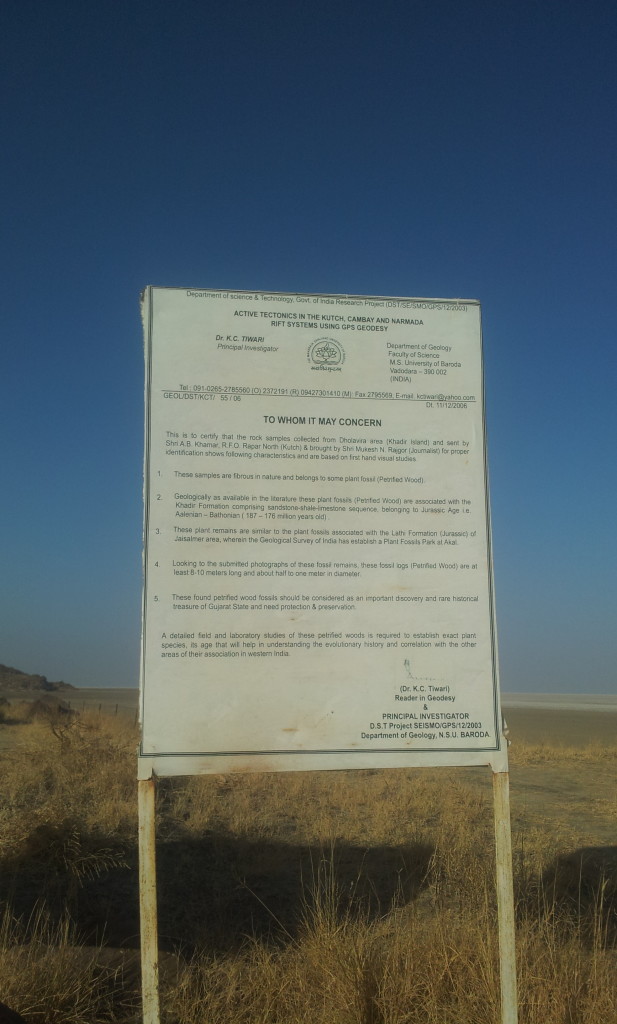

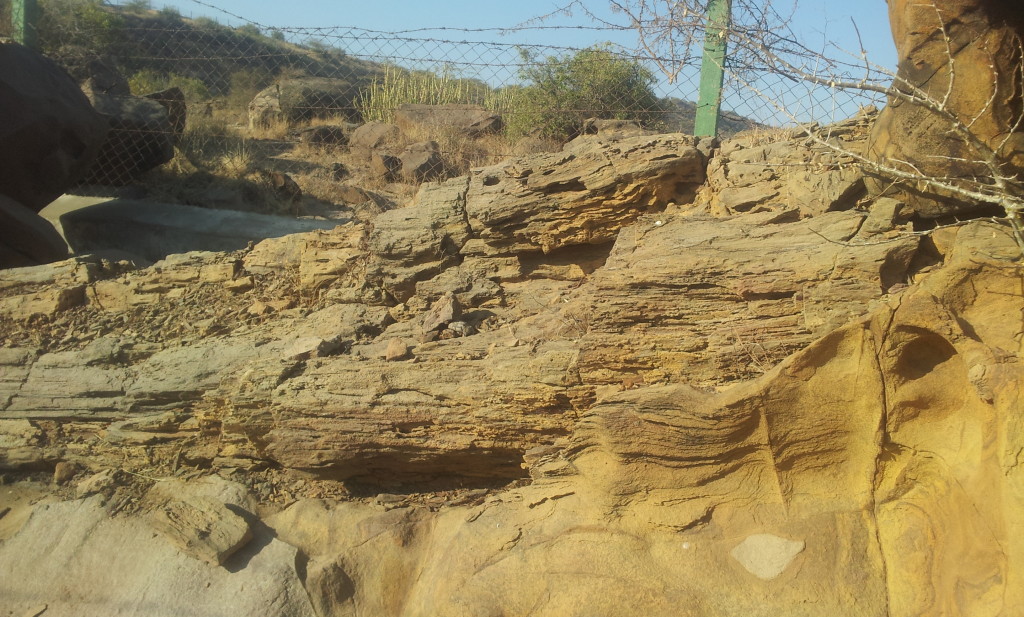
After visiting the fossil tree, we came back to Dholavira site.
Dholavira
{Dholavira, locally known as Kotada Timba, is one of the largest and most prominent archaeological sites in India belonging to the Indus Valley Civilization. It is located on the Khadir Island in the northern part of the Kutch district – the island is surrounded by water in the monsoon season. The Dholarvira site is believed to have been inhabited between 2900 BCE and 1900 BCE, declining slowly after about 2100 BCE, briefly abandoned and then reoccupied, finally by villagers among its ruins, until about 1450.; source: wikipedia/internet}
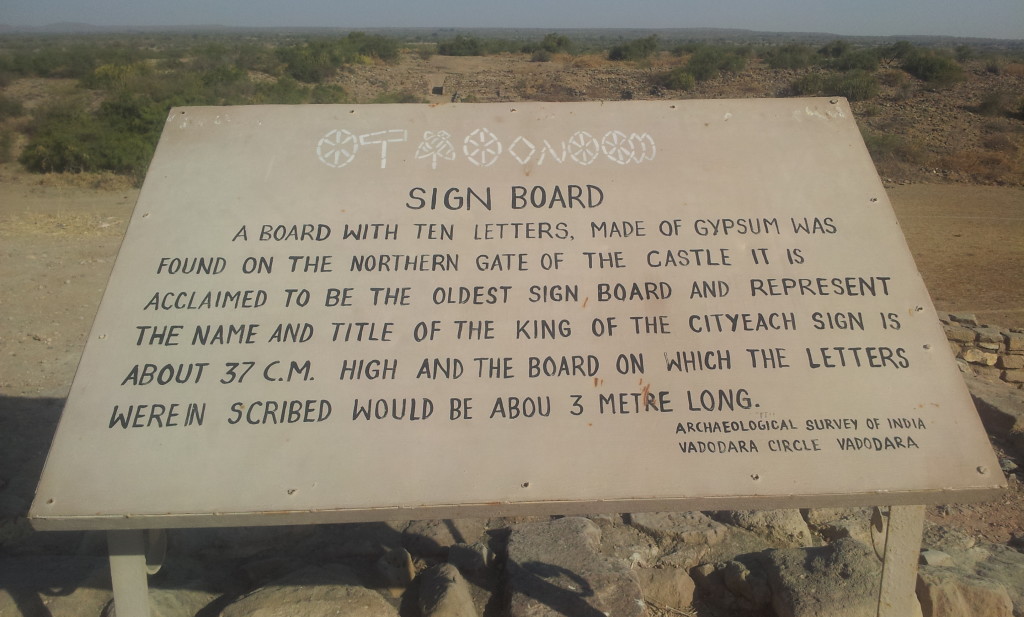




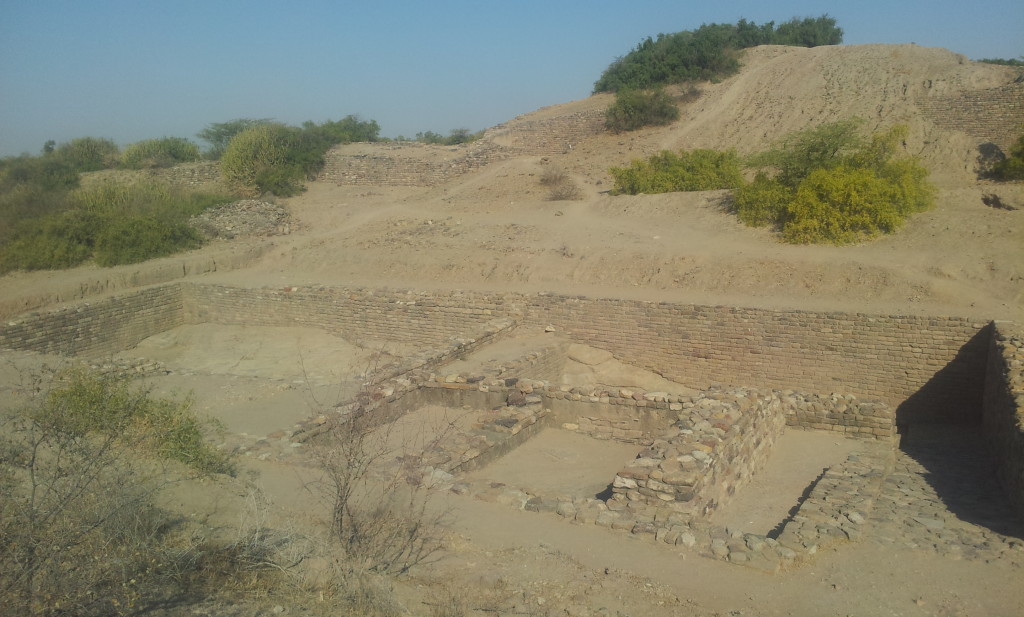
We went round the findings at Dholavira. It is similar to Lothal, but much bigger in area. Even the craftsmanship of the stonework is also excellent. While most of the Gujarat’s recent temple’s stone architecture eroded away due to sea-wind, we can see the Dholavira stones in excellent shape even after 4 – 5000 years.




For a layman like me, it is beyond my capacity to describe this site to you. Hence I request you to go through these two links for better understanding.
1. http://asi.nic.in/asi_exca_2007_dholavira.asp
2. http://en.wikipedia.org/wiki/Dholavira
There is also a meseum, which can be seen after visiting the Site. We finished everything by 10.30 am. After paying and thanking the guide Jamal, we left Dholavira.
This is the fifth and last tourist circuit of Kutch sight seeing. And we were able to finish all the circuits in a record span of just 3 days, that too including getting the permit from BSF office. So with great satisfaction in our face, we went towards Charanka.
Charanka Solar Park (CSP)
If you have travelled from AMD to Kutch, you would have observed the “Welcome to Charanka Solar Park” road sign at umpteen number of places. But as we have taken an altogether different route, we did not come across any such board till we reached CSP. And what is this CSP?
It is the brain child of Modiji. I have seen lot of electric solar panel boards in many places through out India. But all these solar panels/parks put together can not match Modi’s this baby. It is one of its kind in the whole country.
Yes, it is not in any tourist circuit. Even GTDC is not aware of its details. I came to know about this place while doing research about my Gujarat tour. And trust me, it is a worthy place to visit.
{Gujarat Solar Park is the name used for a group of solar parks being constructed in Gujarat. This makes Gujarat as Asia’s largest solar park hub. Certificates of completion were issued on April 19, 2012, for a total of 605 MW, which included some sections that were already operational, and 856.81 MW had been completed by March 31, 2013. One is the Charanka Solar Park, a group of 17 thin-film photovoltaic (PV) power systems, on a 4,900-acre site in the district of Patan. The solar park is expected to save around 8 million tonnes of carbon dioxide from being released into the atmosphere and save around 900,000 tonnes of natural gas per year. A total of 84 developers have registered to build a total of 968.5 MW, from 1 to 40 MW. An increase to 1,000 MW is expected to be completed by 2013; source: wikipedia/internet}
Without knowing much detail, we went to CSP. When we reached there, we realized today is a Sunday, and the park is closed. But we came to know that visitors are most welcome even here also. We went inside, and were greeted by a Maintenance Engineer. As usual, we told him about our tour so far. He called up some number, told our story to them, and then issued a visitor’s pass to us after collecting the fees (Rs. 10 per head). This is where Gujarat stands out from the rest of the states in India. It is a totally tourist-friendly state. No bureaucratic hassles in visiting any place, and the tourists are most welcome everywhere. Truly ‘Atithi Devoo Bhava’.
We went to the watch-tower. From here we can have a panoramic view of the entire CSP as well as other adjoining areas.

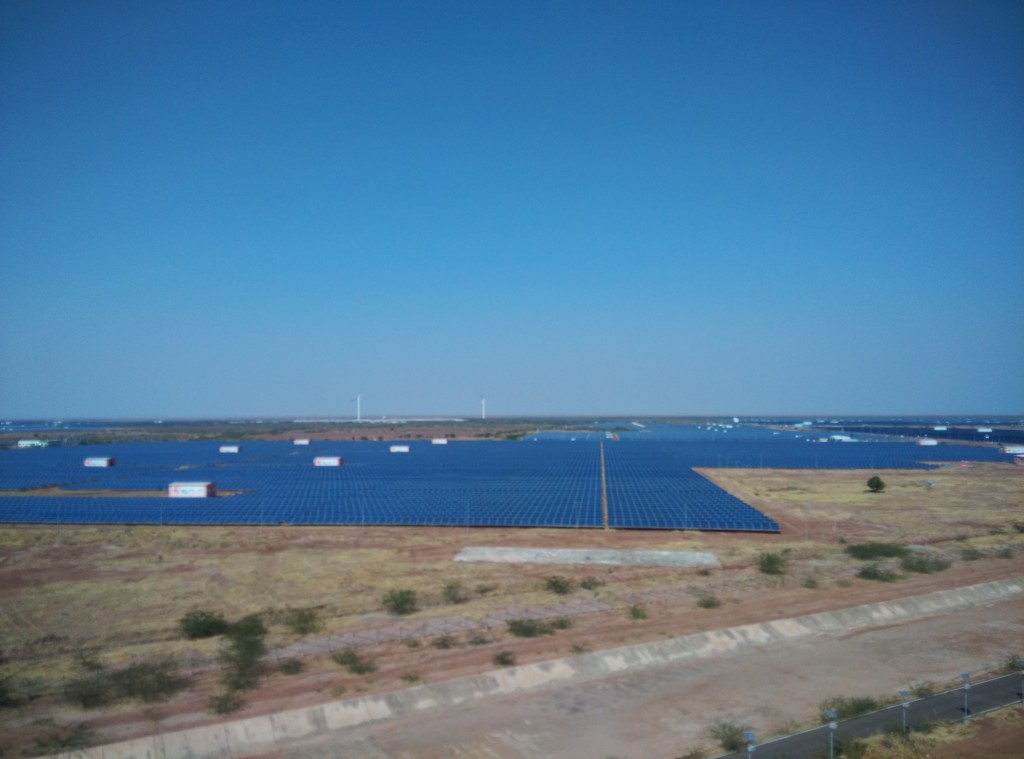
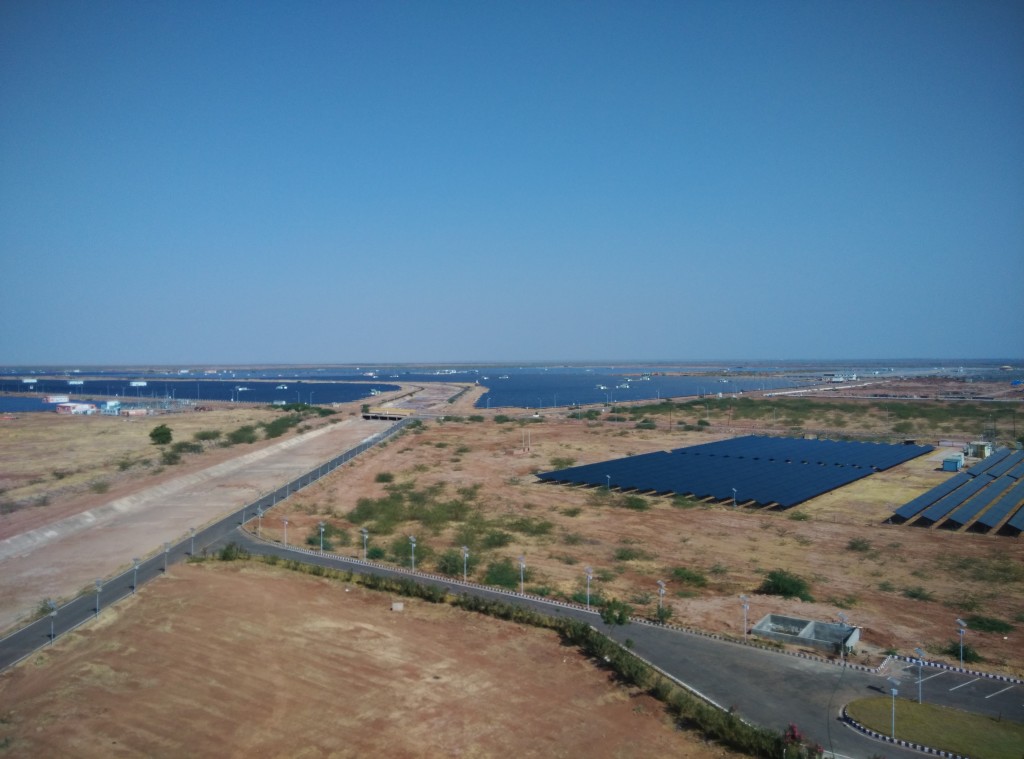


And kindly watch this video:
We wanted to drive around the park to have a better look at the place. But as we have to cover some more important places, we left CSP. We finished our lunch after this, and went to Patan.
Patan
{A number of civic as well as religious buildings were constructed in the city, including many Hindu, Muslim and Jain religious places. There are about 122 Jain Mandirs, more than 100 years old. Besides, there are 9 Hindu temples and 12 Mosques in the city. These monuments are a major attraction from travel and tourism point of view. The foreign tourists throng the city, to view the amazing monuments adorned with intricate carvings and sculptures; source: wikipedia/Internet}
Panchasara Parshvanath Jain Derasar
{Panchasara Parshvanath Jain Derasar is one of the largest of more than 100 Jain temples in Patan, a reminder of Patan’s role as center of Jainism during the Solanki era, with sophisticated stone carvings and white marble floors that are characteristic of Jain architecture. It is also worth visiting Kapur Mahetano Pado, where the stone temple has a wooden interior. Jain temples were once all of fantastically and intricately carved wood until, it is said, the master-builder Uda Mehta saw a mouse carrying a burning candle in its mouth and realized that one mishap would destroy years of work, and from then on insisted that all Jain temples should be created in stone.
Shri PPJD Trust, Patan. Tel: 02766 220559; source: wikipedia/Internet}
We wish we had enough time to explore this place. But as we were running short of time, we skipped this place.
Patan Patola Saree
{Patola is the name of the silk saris unique to Patan. Patola is one of the most difficult forms of weaving in the world. It uses a double ikkat style where the warp and weft threads are dyed meticulously before weaving, according to a pre-designed pattern. The weaver then aligns them perfectly on the loom, which naturally creates a unique combination of geometric delineation with soft hazy outlines.
The saris take 4-6 months to make, with more than 70 days for the coloring of the silk threads, and about 25 days for the weaving. They come in four styles: 1) for the Jains and Hindus, with flowers, parrots, elephants, and dancing figures, 2) for the Muslim Bohras, with geometric and floral design, to be used at weddings, 3) for Maharashtrian Brahmins, in solid dark colors bordered with designs of women and birds, called Nari Kunj, and 4) for traditional export markets in the Far East.
Patola of Patan Pvt Ltd, Patolawala Farm House, Outside Fatipal Gate, Patan – 384265. Phone: 02766 222182, 232172, 09898143484
Patan Patola Heritage, Patolawala Salvivado, Patolawala Street, Patan – 384265. Phone: 02766 232274, 231369, 221369, 09898775748, 09427377376; source: wikipedia/Internet}
Afterall, how much a saree might cost!, few thousand Rupees? You are mistaken. (If you are a ‘Husband’, then I strictly advice you, not to take your wife here). An original Patola Saree can cost up to around 7,00,000 INR (No, it is not typing mistake. It is Seven Lakhs)
Fortunately, as we did not had time, we were saved from the clutches of our wives. Otherwise, … you know, I don’t have to explain.
So from CSP, we went to Rani ki Vav (RKV) in Patan.
Rani Ki Vav
Before I tell you about Rani Ki Vav, I must take you around India, to few of the rarely-seen-places. I say rarely seen places, because I consider these places as some of the best places that I have seen; but they don’t fall in popular regular tourist circuit. There are many other beautiful places, but they generally fall in the popular-and-visited-tourist-places.
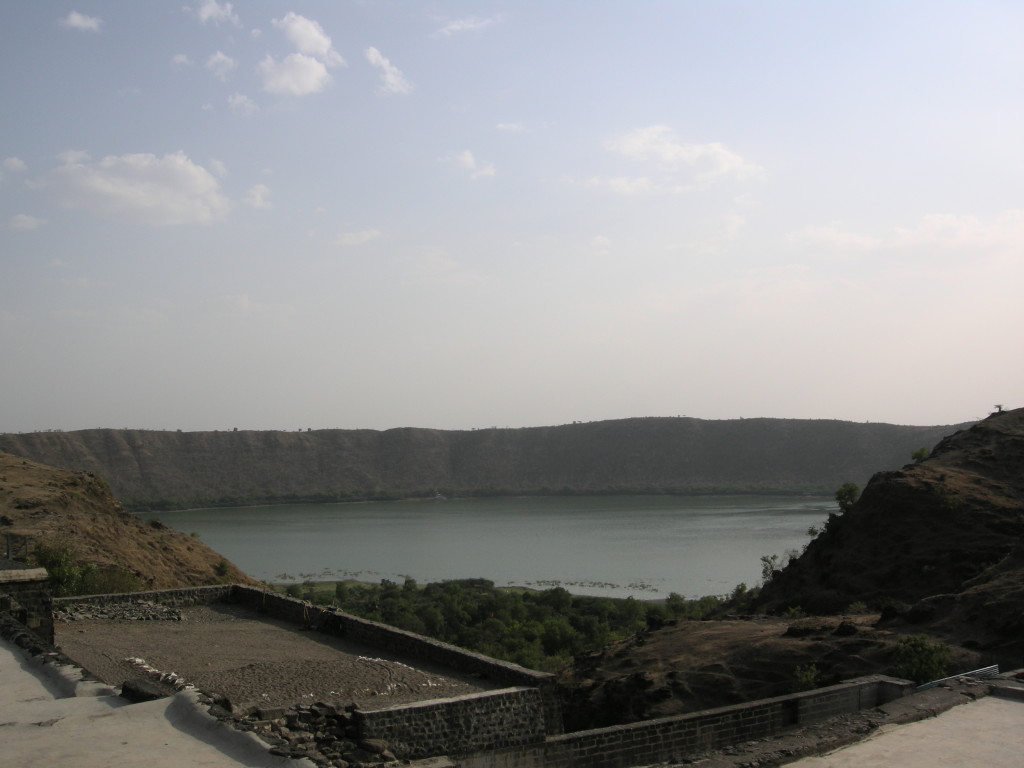
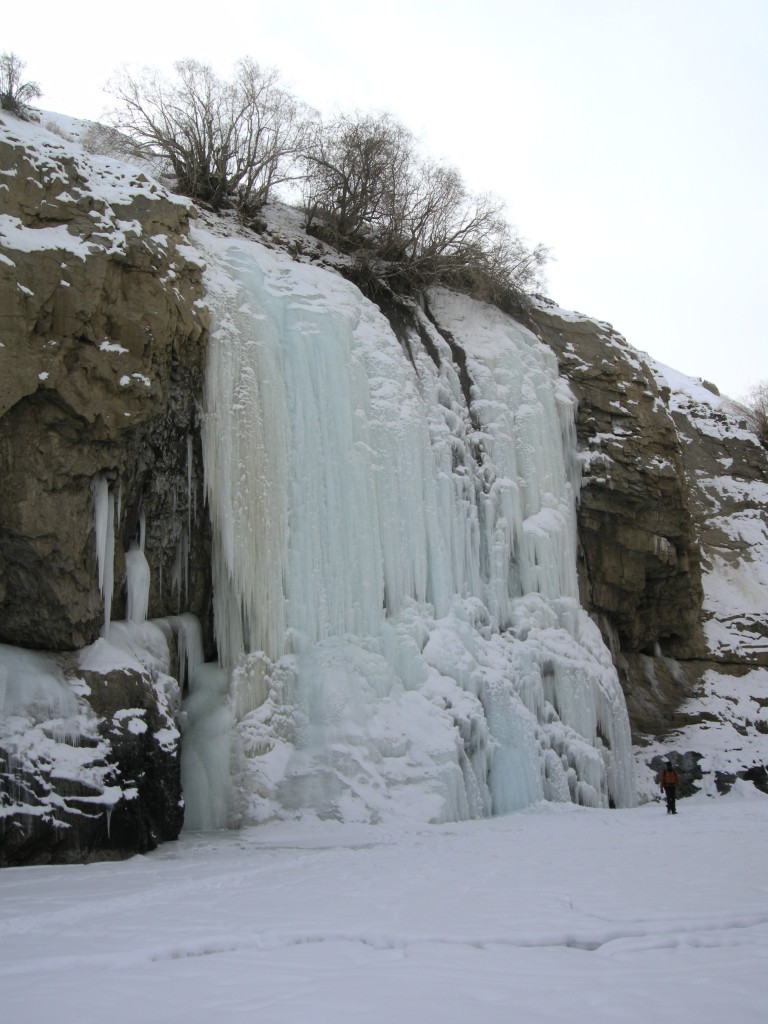



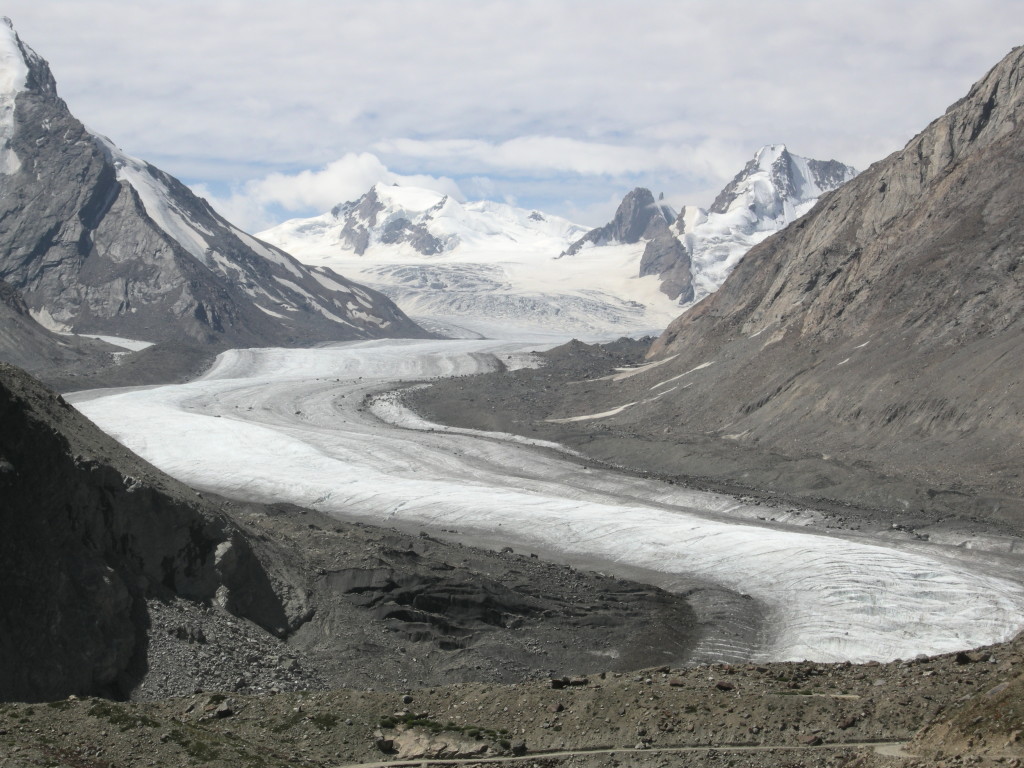
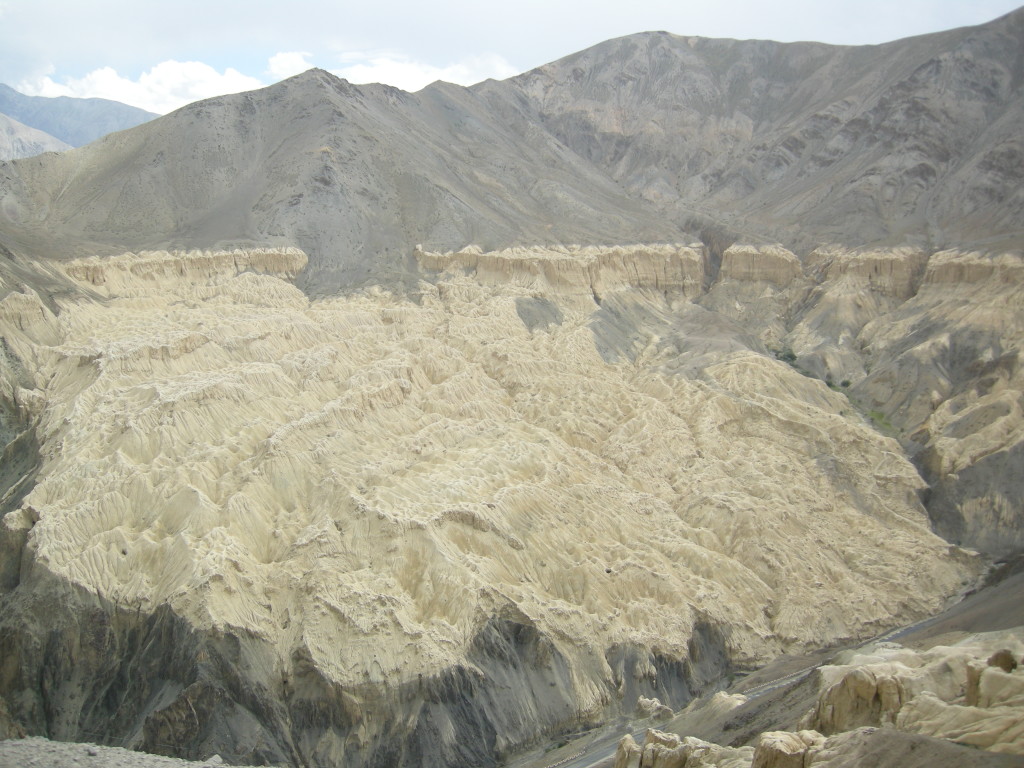
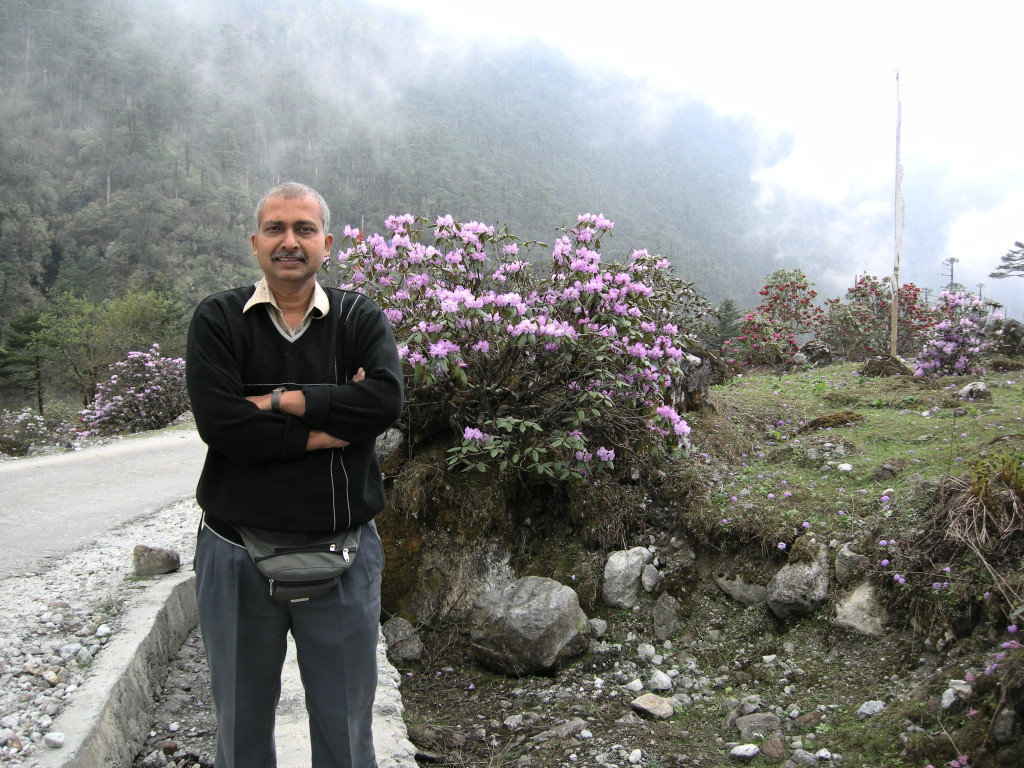

During my many tours covering length and breadth of Mother India, these are some of the rare few places that I have come across. I treat them as special places, which should not be missed by any true traveler. They are both God made as well as Man made.
And why am I telling you all these now? When people talk about tourist places in Gujarat, most of the people are ignorant about this place. Whether you are on a religious tour, or on a jolly tour, a visit to this Temple-Well is a must.
Wav, oh, what a Vav it is!, in future I would like to add Rani Ki Vav into my above list. So what is it all about?
Just imagine a 7 storied temple on the ground. Typically it may look like this: the ground floor will be big in area; as you go up, the area of each floor decreases; lots of stone-carved statues will be there on the outside walls of the temple and so on. And in the seventh floor, in the sanctum sanctorum the chief diety’s statue is housed.
Now let us come to RKV. So think of this 7 storied temple, under the ground, instead of over the ground. We will be having 7 underground floors, each one smaller than the previous floor. And in each floor, we can see lots of statues, depicting Ramayana, Mahabharata, Dashavatara and such other stories; on the inside wall of these underground floors. At the end, in the 7th underground floor, you have a well, filled with water. And this is RKV for you.
If you have not seen RKV, then you have not seen all the important places in Gujarat. (Just to remind you, Finance Minister Arun Jaitley has mentioned about this Vav in his Budget speech this year). So let us go ahead with this information.
{Rani ki vav (Queen’s step well) was constructed during the rule of the Solanki dynasty during 1022 to 1063 AD. The step well was later flooded by the nearby Saraswati River and silted over until the late 1980s. When it was excavated by the ASI, the carvings were found in pristine condition.
This magnificent east-facing step well is approx 64 mt L, 20 mt W, 27 mt D. A stepped corridor compartmented at regular intervals pillared multistory pavilions is a unique feature. It was one of the largest and the most sumptuous structures of its type. It became silted up and much of it is not visible now, except for some rows of sculptured panels in the circular part of the well; source: wikipedia/internet}
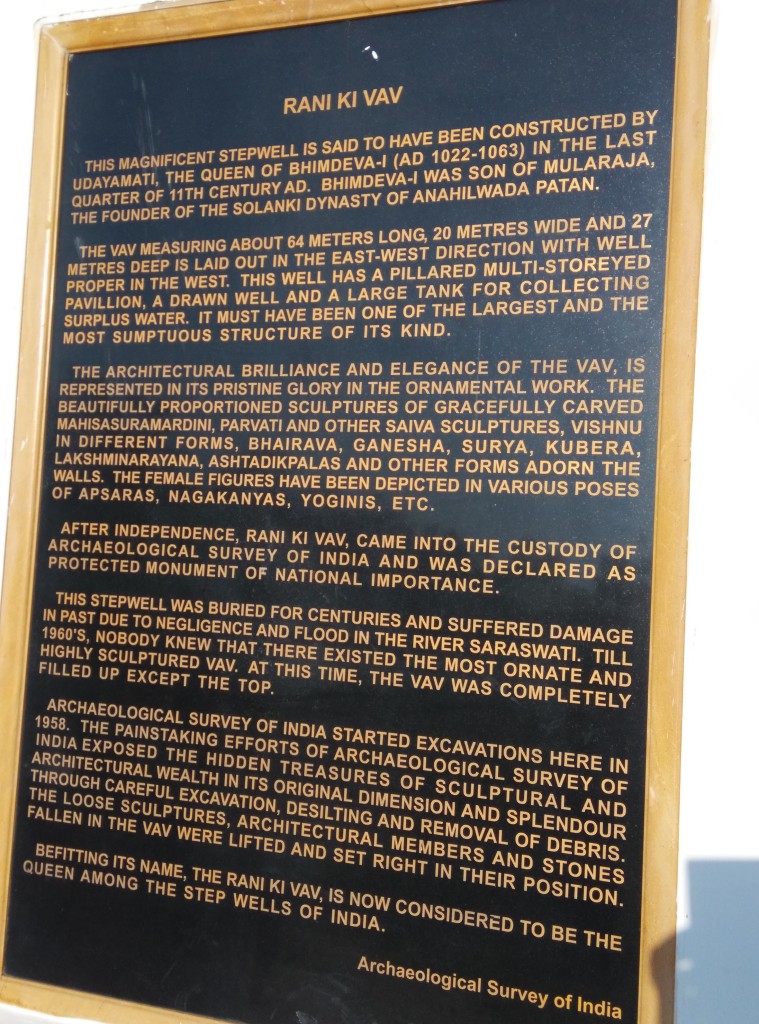

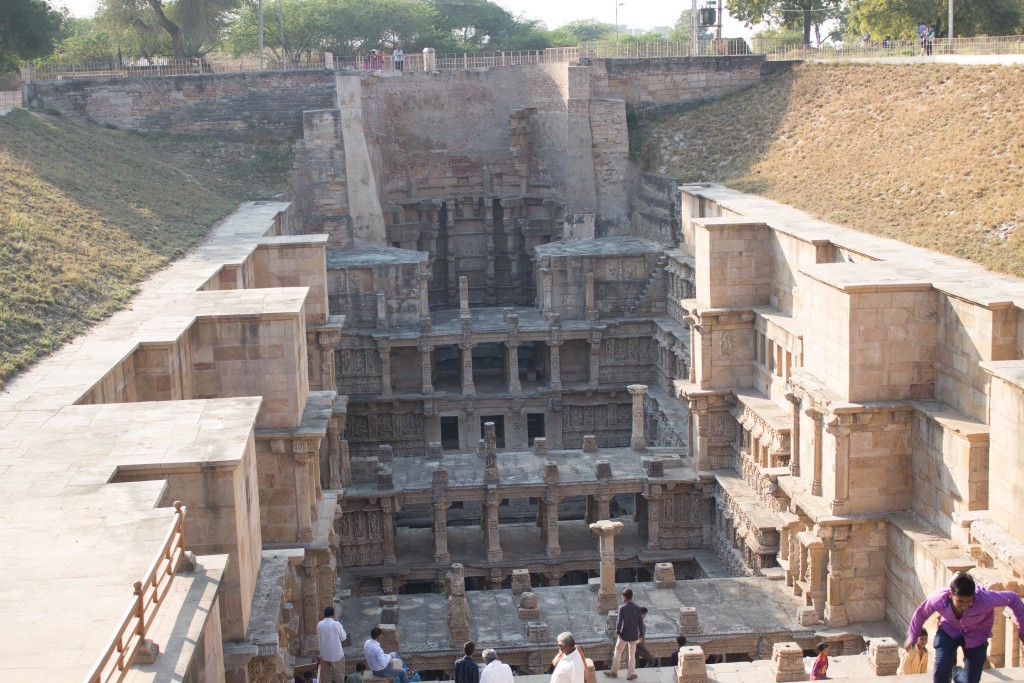

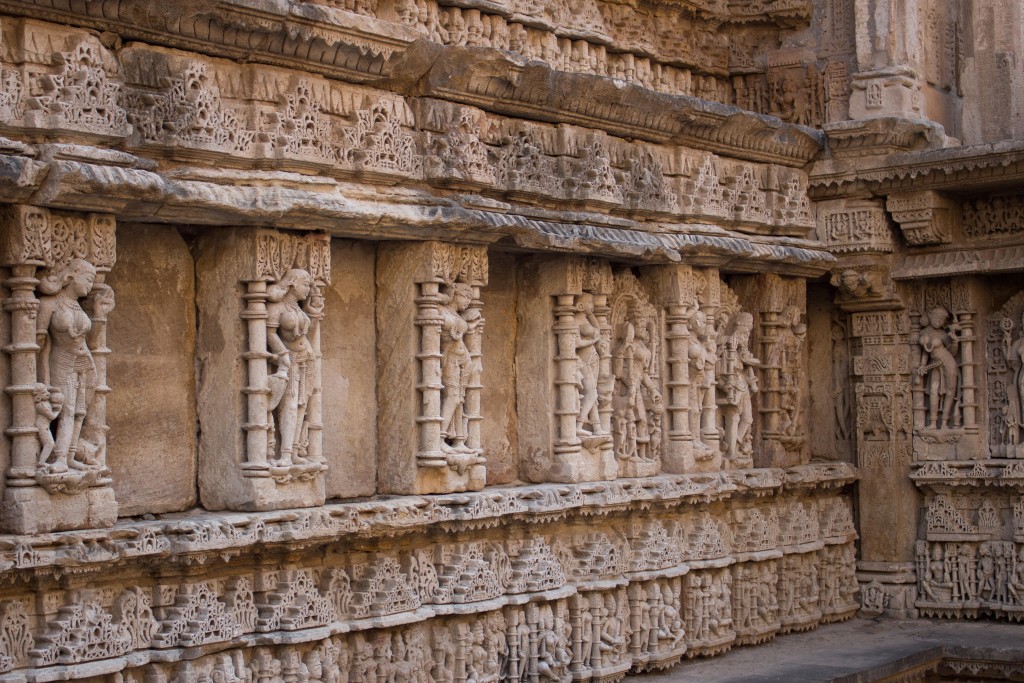
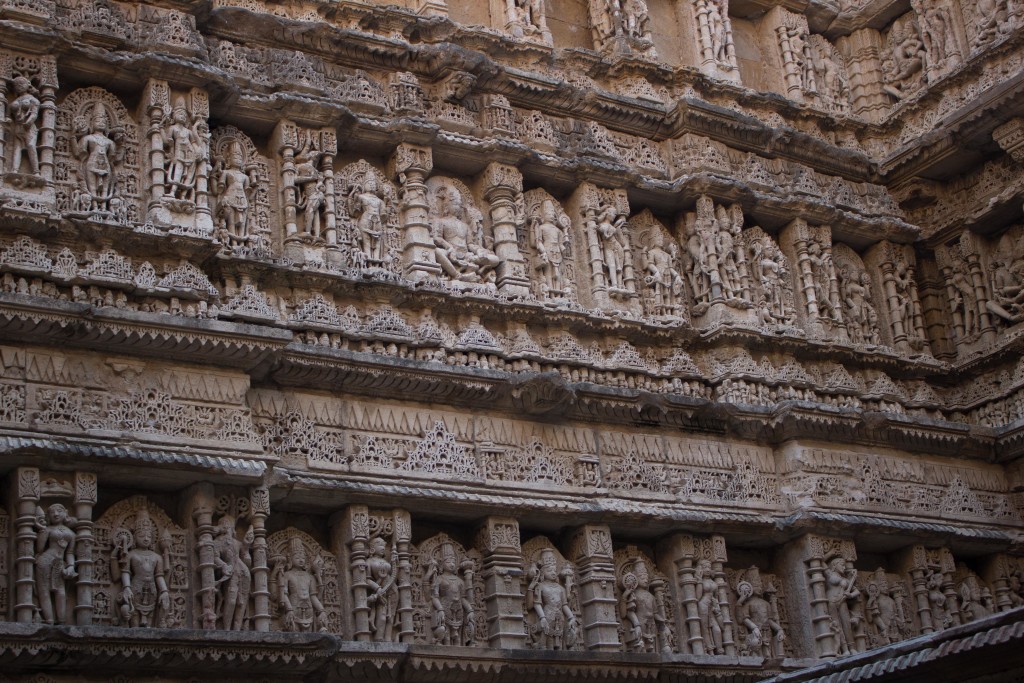


What to do, the time is fast catching up. Other wise we could have hired a guide, got many more details and given you a detailed story. So let us move on.
Now I am taking you to the places that we were supposed to visit according to our original plan. We skipped all these places due to paucity of time.
Sahastra Linga Lake: {The Sahastralinga Talav (lake) is on the left bank of river Saraswati. Siddhraj Jaysinh built the reservoir Sahasralinga Talav, in 1084, over a lake originally known as Durlabh Sarovar, built by the King of Durlabhray. During his rule he had many artificial tanks built in different parts of Gujarat, but this one surpasses all the others, technologically, artistically, and spiritually.}
Siddhpur: {At Siddhpur, you come across rows and rows of palatial wooden 19th century townhouses. Painted in subdued pastel colours and built three-to-four storeys high, most of them were erected by the Bohras, Gujarat`s affluent mercantile Muslim community. Today, most of the houses remain locked for most part of the year and exhibit an oddly quiet and desolated European town look. But once a year (generally in December), the streets again pulsate with life, because the Bohra families return to Siddhpur for social ceremonies}
Balaram Mahadev Temple: {Away from the crowd, Balram Mahadev at Banaskantha is calm and quite. It is situated on bank of river inside a green forest. Nearby is Balaram resort. From Balaram Mahadev we can go to Ambaji, the road goes through Balaram Ambaji Wildlife Sanctuary.
The palaces of the Nawab and Hindu Temples are also worth seeing. The palace is in a neo-Classical Baroque style, with arcades and classical columns. It has now been taken over by a private entrepreneur, and opened as a resort. Don’t miss this place also}
Ambaji Temple, Banaskantha: {This is the principal shrine of a Goddess who has been worshiped since the pre-Vedic period. She is often referred to as Arasuri Amba, named for the location of the temple in the Arasur hills, near the source of the Saraswati River at the south-western end of the Aravali mountain range. The red flag above the small temple dances welcomingly in the wind. Made of white marble with gold cones, the temple was originally built by Nagar Brahmins. There is a main entrance in the front and only a small side-door, because it is believed that Mataji has forbidden the addition of any other door. The temple is surrounded by an open square called chachar chowk where ceremonial sacrifices called havans are performed.
The inner sanctum of the temple has silver-plated doors. There is a gokh, or niche, in the wall on which is fixed a gold-plated marble inscription of the Viso Yantra, a Vedic text on sacred geometry, which is the main focus of worship. There is no idol of the goddess, perhaps because the temple is so ancient that it predates idol-worship, but the priests decorate the upper portion of the gokh in such a way that it looks like an idol of a goddess from a distance.
No purses/mobiles/cameras/footwear are allowed inside the temple, leave them in your car; carry some water; do not miss buying the Prasad; queue starts almost at 4 am near temple gate.
Time: 0700-1130, 1230-1630, 1830-2100 Tel: 02749 262236, 264536, 262930, 262636}
====================================================
Modhera Sun Temple (MST)
Before I take you to Modhera Sun Temple (MST), kindly allow me to explain few sentences about JM (Jantar Mantar at Jaipur), KST (Konark Sun Temple), and the like.
If you search the net, you can see that there are many Sun Temples across the whole world. And in Inida, I have seen the Sun Temples at Konark (Odissa), Arasavalli (Andhra), Suryanarkoil (Tamilnadu), Naravi (Karnataka), Somnath (Gujarat) and ofcourse, now at Modhera. I have also seen the Jantar Mantar (JM) at Jaipur.
I am an ordinary tourist, and my only interest is seeing the beauty of Mother India and Mother Earth. I am neither an expert nor any research student of any temple architecture or the like. So, if anything in my following observation is wrong, then my advanced apologies. They are not intentional, and hence forgive me as it has come from an ignorant, stupid, idiot fellow like me.
Now kindly allow me to proceed. My point is, what are the differences or similarities between Modhera, Konark, Jantar Mantar and other Sun temples? How can we compare these temples with respect to each other?
Jantar Mantar at Jaipur: I am not going too deep into its construction, architecture etc. It is a collection of architectural astronomical instruments. It was built by Sawai Jai Singh, a Rajput king. It was constructed around 1730s. At JM, the best and most attraction is the Sun Dial, or the Samrat Yantra. From this Yantra, we can know the exact time of the day, all round the year.

To know the technical beauty of this great master piece, you must hire a guide and spend at least a couple of hours.
Arasavalli, Suryanarkoil, Naravi and Somnath Sun Temples: These are temples where the main deity is the Sun God. They are in no way different from any other temples of any other God.
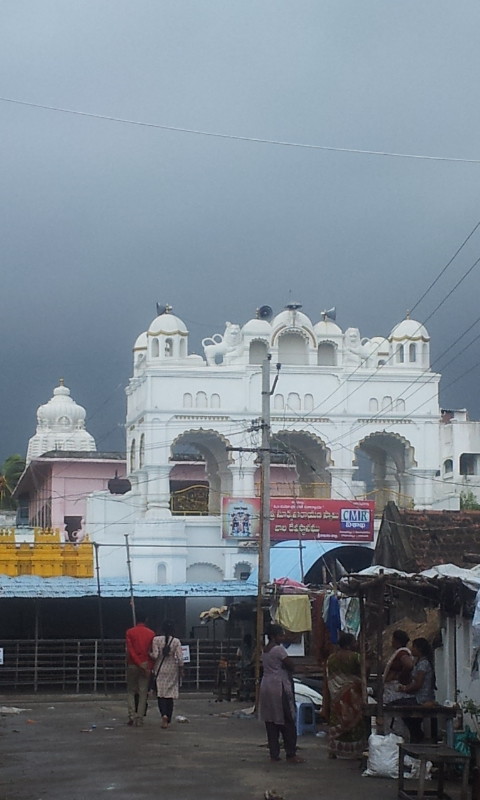
Konark Sun Temple: The KST was built around 1250s, by King Narasimhadeva I of Eastern Ganga Dynasty. The temple is in the shape of a gigantic chariot with elaborately carved stone wheels, pillars and walls. A major part of the structure is now in ruins. Again, hire a guide and try to get the technical details of this Temple. I can confidently say that KST is TECHNICALLY only one Sun Temple that I have seen so far. No other temple, including the one at Modhera, is technically a Sun Temple.
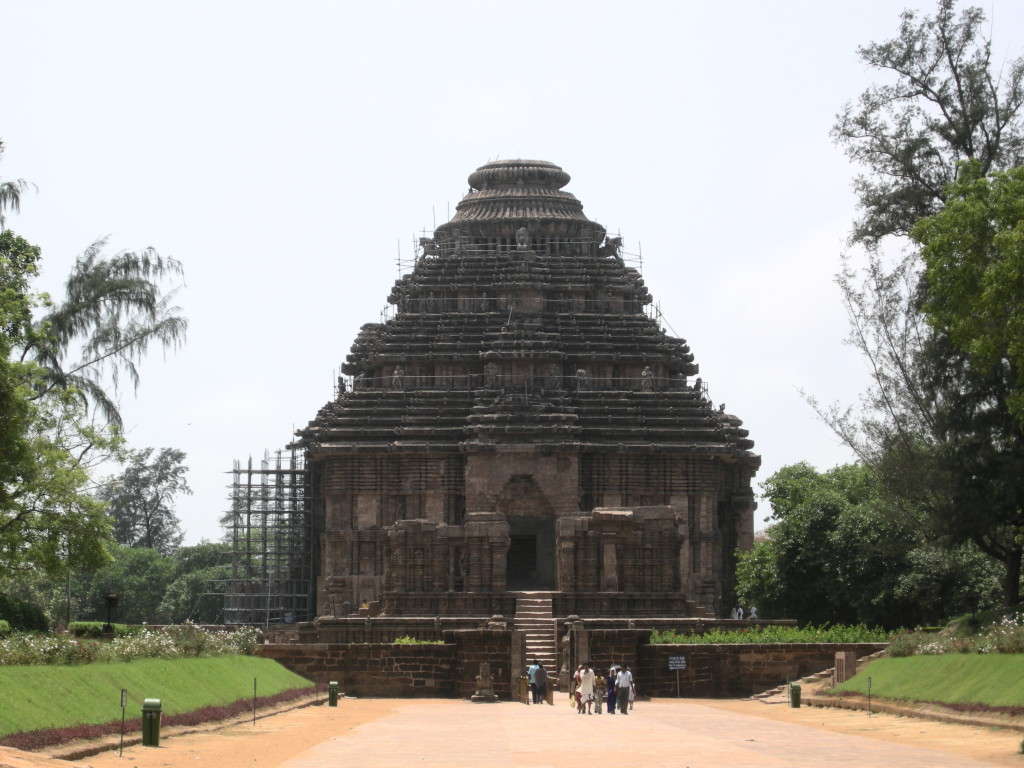
What I meant by Technically? Like in Jantar Mantar, at Koark Sun Temple also we can find out the exact time of the day, throughout the year. What about night? Yes, we can know the time of the day, even at night. (But unfortunately, today we don’t know how to see the time during darkness).
This video is by “Phenomenal Travel Videos”. Hats off to them. I have used their video without their permission, but acknowledging their name here. Just watch this amazing video.
How is Konark Sun Temple? Beautiful, wonderful, gigantic, splendid? No, my English vocabulary is not that good to describe this masterpiece. It has made such an impression in my mind that, I came to the opinion that in any Sun Temple, we must be able to tell the “Time Of The Day”.
Iron is used in the construction of Konark Sun Temple. It is believed that Konark Sun Temple was very close to sea shore, when it was constructed. (Later the sea moved southwards and hence now the temple is around 2-3 kms away from the sea shore) Those people used iron in the temple’s construction. And even today also we can find this iron bars lying on the ground inside the temple premises. Oh what a wonder, these iron rods are not rusted, even though it is constantly exposed to sun, rain and sea winds. Again, unfortunately today we don’t know how to manufacture rust-proof iron.

Not only technically, even architecturally also KST is superb. The sculptures, statues, scenes from Mahabharata, Ramayana, Kamasutra etc are all narrated very well here.
Khondalite, Chlorite and Laterite stones were used in the construction of this temple. And these stones have withstood the test of time.
Modhera Sun Temple
Now let us come to Modhera Sun Temple and see how it is? It just pales into also-ran compared to Konark Sun Temple. Almost all the web sites in the internet tell us that Konark Sun Temple and Modhera Sun Temple are the most beautiful Sun Temples of India. Same is true with all the guides, whenever the topic of Sun Temple comes in, during my many visits across many places in India. But I beg to differ partially. Konark Sun Temple is the ONLY SUN TEMPLE of India. You put Konark Sun Temple in one side of the scale, and put all other Sun Temples in another side of the scale. Konark Sun Temple will go down (more weight). So Konark is Konark; no parallels or no comparisons.
What I meant was only technicality of the Sun Temple. See, in any other temple (like Shiva, Rama, Krishna, Vishnu, Amba or any such Temples), this issue does not arise at all. But in a Sun Temple, as the Sun is in charge of the Time also, I am interested in knowing whether I can find out the Time also from the temple.
May be, my whole thinking could be wrong.
Then, did I mean that Modhera Sun Temple is nothing, and need not be visited at all? I must be stupid to make that statement. Who am I to judge these masterpieces?
Modhera Sun Temple just stands out from the rest of the temples in Gujarat. It is also beautiful, wonderful, gigantic, splendid etc etc. (Architecturally, the Galteshwar Shiva Temple at Dakor, Anand comes close to MST in Gujarat. I have already shown you this temple on Day 6 of our tour. Unfortunately, not many people visit this temple)
So now I must explain how is Modhera Sun Temple . With respect to sculpture, stone work, statues etc, in my opinion, it can definitely be compared to the Belur Chennakeshava Temple of Hasan, Karnataka.
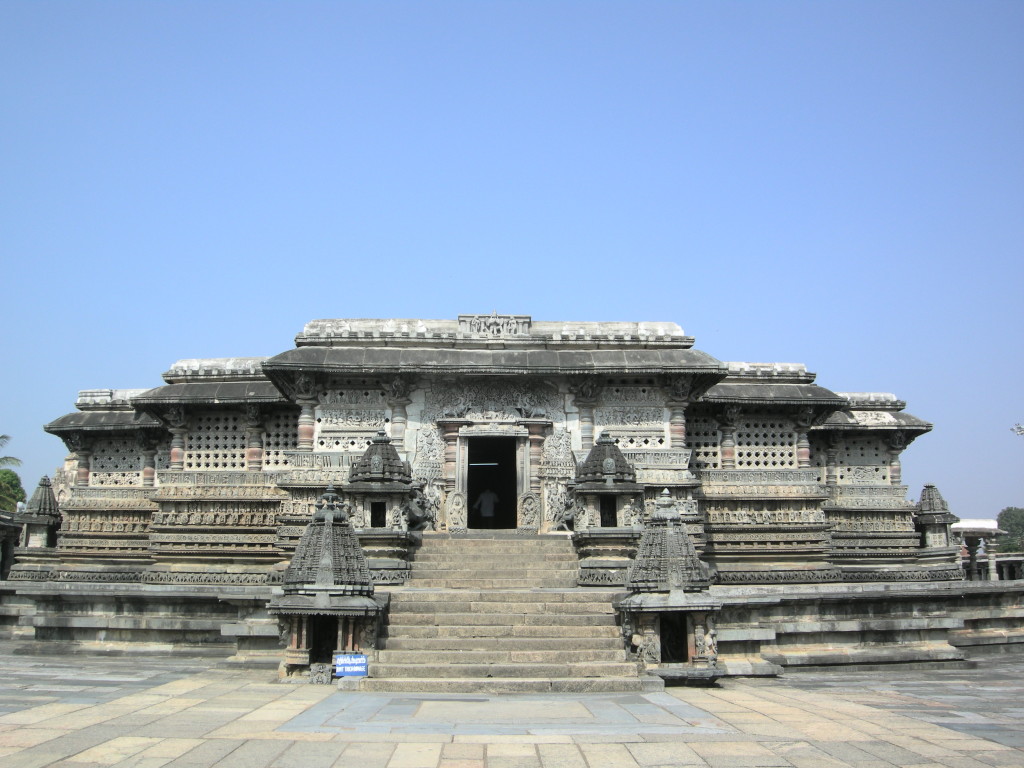
The stone used in Belur Temple is Soapstone and has withstood the test of time. The stone used in MST is Sandstone, which is relatively soft. It has failed to pass the test of time. Due to the salty wind from the Arabian Sea and natural wear and tear, the statues are worn out at many places. Even then, whatever left out is a masterpiece worth to watch. So while in Gujarat, a visit to MST is a must.
(I might be wrong in the details that I have provided here. So my humble request is that, don’t take these information for any other purpose other than only for tourist interest. And once again, my apologies if I am wrong. My only interest is to compare Konark and Modhera Sun Temples).
Now let me start all over again. Some information about the temple from the internet:
{Set along the backdrop of River Pushpavati, surrounded by a terra-formed garden of flowering trees and songs of birds, rests the famed Sun temple of Modhera. As you relax and soothe your nerves, become one with nature and open your mind to the poetry in stone, dedicated to the sun god, living glimpses of the era far elapsed emerge out of the intricacies of narrative sculptures. The remains of the Sun Temples at Modhera are relics of times gone by when reverence of the natural elements fire, air, earth, water and sky were at their peak sharing space with myriad manifestations of Vedic gods.
The Sun Temple was built by Rushabh Bhimdev I of Solanki Dynasty in AD 1026. This was the time when Somnath and the adjoining area was plundered by Mahmud Ghazni and reeled under the effects of his invasion. The Solankis, however, regained much of their lost power and splendour. Anahilvad Patan, the Solanki capital, was restored to glory. Royalty and traders jointly contributed to build grand temples.

Solankis were considered to be Suryavanshi, Gurjar or descendants of Sun god. The temple was so designed that the first rays of the sun fell on the image of Surya, the Sun God, at the time equinoxes. The temple is partially in ruins after it was also finally destroyed by the Allauddin Khilji. However, enough has remained of the temple to convey its grandeur.
Time: 6:00 am – 6:00 pm; Ph: 079-26589172, 09974335693; source: wikipedia/Internet}
We hired a guide and he explained all the details in English. We thought that there was sufficient time for us. We were mistaken. While the temple closes at Sun Set/6 pm or so, the Museum closes at 5.30 pm. So we could not see the Museum.
As I said earlier, Iron was used in KST which has withstood the test of time. And at MST, Teak tree wooden sticks are used to join the sandstone pieces, columns, beams, pillars etc. They are 1000 years old and have withstood the test of times. Oh, what a splendid architecture.

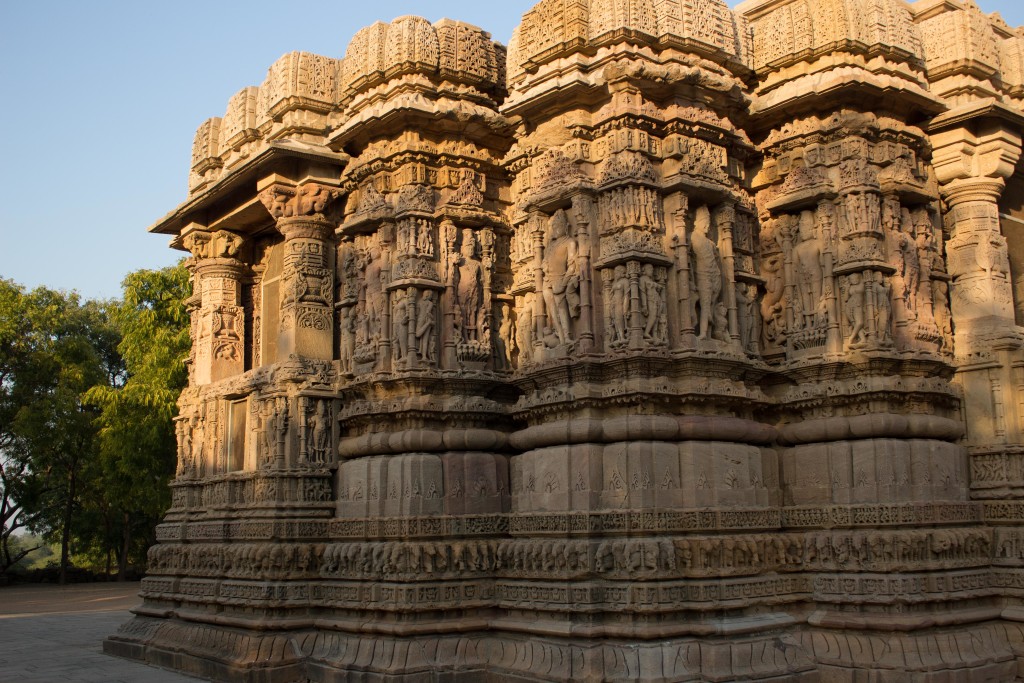


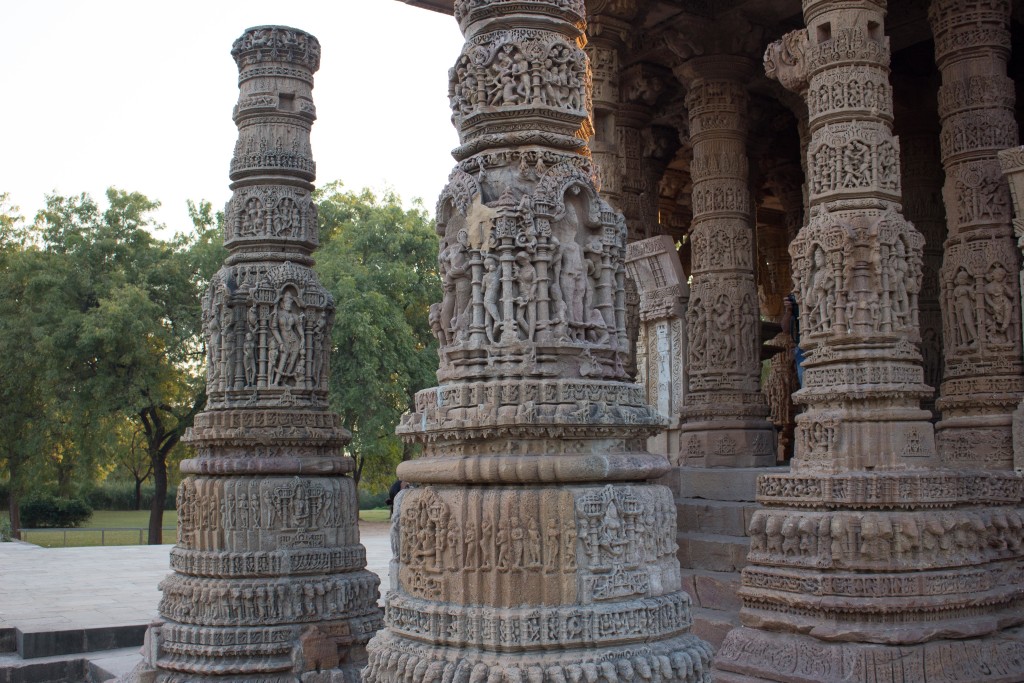



The time was around 6.30 pm. And it was time to say ‘Good Bye’ to our Gujarat tour. So we decided to move on to Mehsana. We knew that Mehsana has a BAPS SNM. It is easy to stay in SNM guest house. Also, the Dudhsagar Dairy was in our hit list. As we could kill both these two birds in one stone, we went to Mehsana.
Mehsana: {ONGC: Established in November 1967, the Mehsana fields are one of the highest onshore-producing assets of the ONGC, covering an area of 6000 km2, with 28 fields in 2007–2008. Mehsana also has 1311 oil wells and 16 gas wells producing 5800 ton/day}
Dudhsagar Dairy: {The city is known for its local Mehsani breed of buffaloes. The Mehsana District Cooperative Milk Producers’ Union Ltd., popularly known as Dudhsagar Dairy, is a member of the state-level – Gujarat Cooperative Milk Marketing Federation Ltd., Anand. Dudhsagar Dairy is the largest dairy in Asia, processing on an average 1.41 million kilograms of milk each day. It has established a network for procuring milk from 4,500,000 milk producers through 1150 village milk cooperatives. Tel: 02762 253201-05}
It was pitch-dark when we reached the Dairy. To our disbelief and shock, we noticed that the BAPS SNM is just next to the Dairy.
Obviously we did not expected the Dairy to allow us inside at this time. The sales counter is just opposite to the Dairy. We went there and relished some ice creams and sweets. As we will be heading towards home, we also bought some sweets for our family.
We went to SNM, had the Darshan of the swami and settled down in the room.


Total distance covered: 383 kms.
Read previous day’s account| Read next day’s account





Bhatji:
Very nice blog of Gujarat tour with a detailed description and photographs. Thank you very much sharing your experience. My wife and I are travelers and interested to know more about your other travel experiences. Is there any way we can get that information?
Extensive cataloging and good research done. The thrill of travel and the passion with history leaps out from your travelogues. Would want to interact with you and if interested make a documentary for the Great Indian Wonders a much pending project of mine.
Thanks Aanchal.
Refreshing to read such a beautifully detailed travelogue!